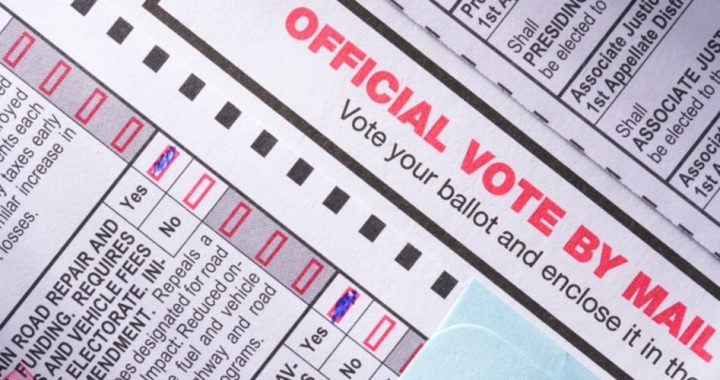
Despite assurances to the contrary from the Democratic Party and their compliant allies in the mainstream media, mail-in voting threatens the integrity of the 2020 presidential election, and the absentee-voting chaos in Wayne County, Michigan, on primary election night — August 4th — simply provides more evidence that we should be concerned.
Three weeks after the primary, Wayne County’s Board of Canvassers are asking the Michigan secretary of state, Jocelyn Benson, to investigate primary election night problems, so as to prevent a repeat in the November presidential election. President Donald Trump narrowly carried Michigan in the 2016 election, and it is considered a swing state for 2020.
Seventy-two percent of Detroit’s absentee-voting precincts did not match the number of ballots cast, according to the Detroit News. Forty-six percent of all precinct numbers had problems.
Michigan state law requires that poll books — which list the registered voters in that precinct — match up with the absentee ballots cast.
Monica Palmer, a Republican member of the Wayne County Board of Canvassers, told the Detroit News, “It was so inaccurate that we can’t even attempt to make it right.”
According to Breitbart News, Bob Cushman, a Republican Party poll challenger, filed an affidavit stating that several counting tables “had opened ballots with no poll book” to check whether the individual was actually authorized to cast his or her ballot. He also claimed that “pages were being inserted into several poll books.”
Polls closed at 8 p.m., then around 2 a.m., an order was made to open the remaining ballots “for immediate tabulation without additional processing or notation.”
Considering that 1.6 million Michigan residents cast absentee ballots in the August primary — and the number will almost certainly be much higher for the November presidential election — problems such as this could be critical in the attempt to determine who is elected president.
Absentee balloting has been used for several years, and in most states, such voting is conducted under certain legal guidelines. For instance, those wishing to vote absentee must request the ballot from the election authority, whatever it is called. Once the ballots are received by mail, the voter must then follow the instructions included in the packet to cast a legal vote, which ordinarily includes some proof, such as notarization of the voter’s signature, that the person casting the vote is legally permitted to do so.
There is much confusion among the general public about the Democratic Party’s push for a huge increase in voting by mail in November, thinking it would be just like absentee voting. What the Democrats are wanting, however, is not for voters to request a ballot that will be returned later under the legal guidelines used in traditional absentee voting. What they are advocating is for every registered voter to be mailed a ballot, whether or not it has been requested.
Considering that the average American moves about 12 times in his lifetime, voters are often registered at places different from where they now live. Some voters are no longer even in the state where they remain registered, and others are no longer living at all.
Yet, whether people have died, or they have moved, they often remain registered at an address where they no longer live — and where a ballot will be delivered by the U.S. Postal Service. This means a person living at the address — not the registered voter — could simply mark the ballot and return it. There are many other problems with mass mail-in voting, but this one problem should be enough to scrap the idea.
Of course, Democrats believe that they will benefit by such widespread voter fraud.
What happened in Michigan also illustrates the dangers of a national popular vote. Take the problems experienced in Wayne County, and multiply them across the nation, and it would be impossible to determine the outcome of a close presidential election. As it stands now, there is not a strong incentive to stuff the ballot box in states such as California, where Democrats have run up huge victory margins in presidential elections since the 1980s. But, if there is a national popular vote to determine the winner of the presidential election, the incentive is very strong to pad the Democratic vote in places such as Los Angeles County.
Can one imagine a national recount in which one candidate apparently bested the other by a few thousand votes? At least with the electoral college system, voter-fraud concerns are contained within states such as Michigan and Wisconsin, where a few thousand votes determined the winner of those state’s electoral votes last time, and may very well do so again.
With the outcome of the presidential election hanging on mail-in votes in swing states such as Michigan, Pennsylvania, New Hampshire, and Wisconsin, it might prove impossible to determine who actually won the election. The only thing we would know for sure is that the chaos in Wayne County, Michigan, may become a nationwide phenomenon.
Image: Bill Oxford/iStock/Getty Images Plus
Steve Byas is a university instructor of history and government and the author of History’s Greatest Libels. He may be contacted at [email protected].



